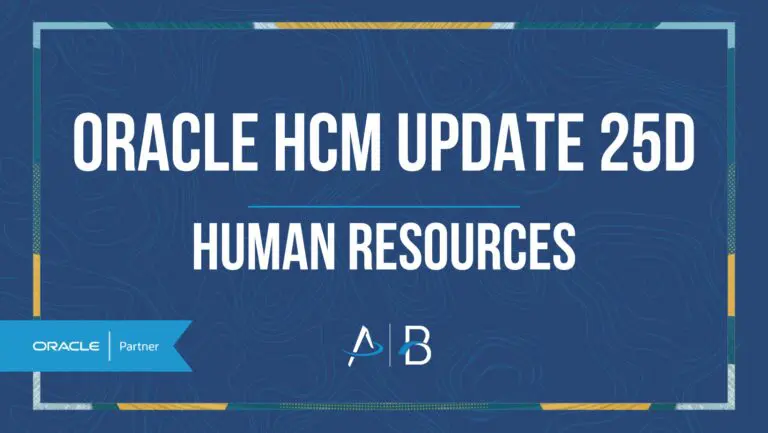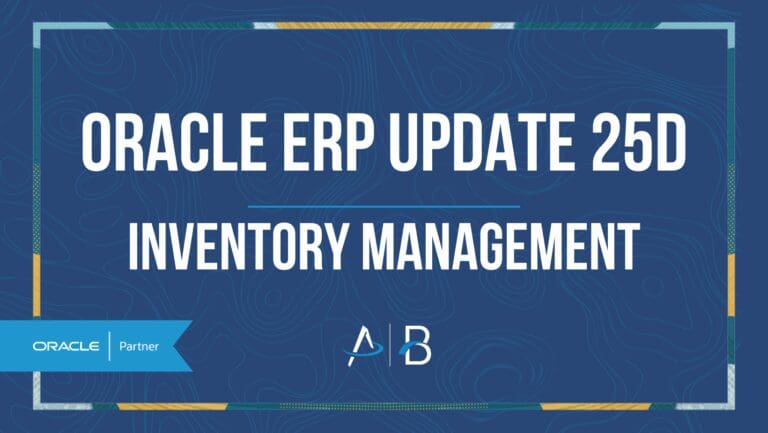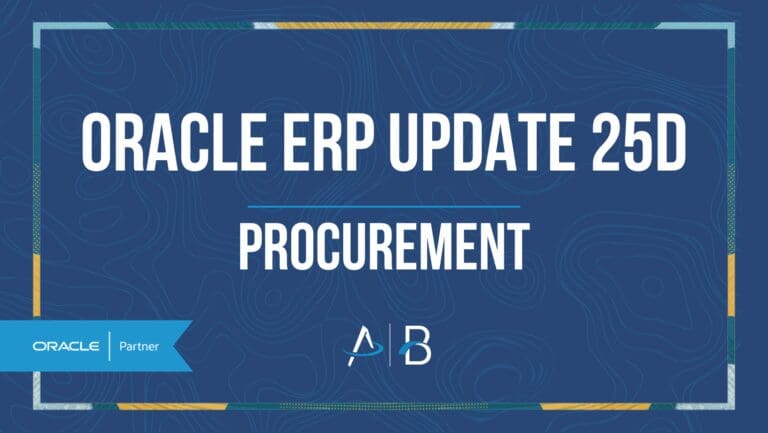Oracle HCM Update 25C: Compensation
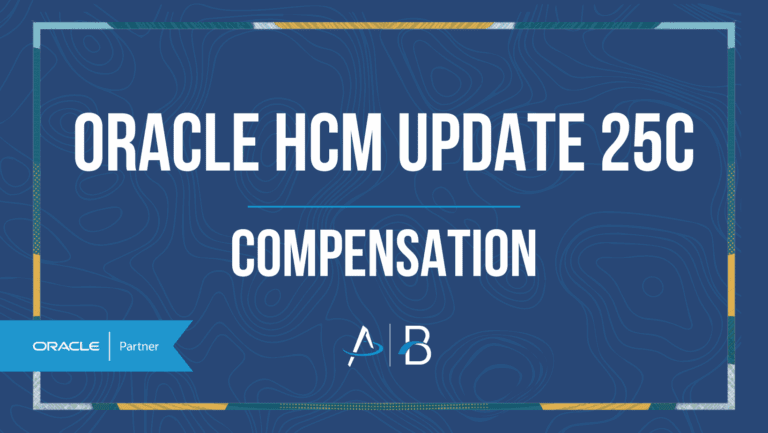
Medium Impact

Feature Enablement
Redwood
Features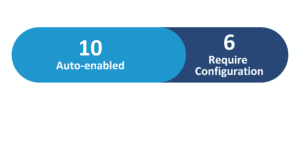
Generative AI Features
25C Update Features Covered:
- Redwood Experience
- Generative AI
- Total Compensation Statement: Item Details Display Option at Category Level
- Hide Annual Cost by Plan in the Redwood Benefit Enrollment Pages
- Market Data: Business Rule for AI Assist in Compensation Info Market Composites
1. Redwood Experience
Redwood continues to expand across compensation pages, focusing on usability, speed, personalization, and flexibility. Key highlights:
- New Redwood Pages:
- Manage Survey Data (previously Import Survey) and Supplier Structures now use Visual Builder Studio with richer interactivity.
- Download Salaries now supports decimals, assignment info, and business rule-controlled previews.
- Enhanced Pages:
- Review Proposed Progressions and Salary Updates now loads 100 records at a time.
- Adjusted FTE now indicated clearly in logs and UI for GSP processing transparency.
- Page headers can now display contextual Person/Assignment attributes via VBS.
- Total Compensation Statement Upgrades:
- CKEditor support in supplemental info.
- New options to display Annual Salary, hide item details at category level, and simplify currency to code-only.
These changes empower HR and Compensation teams with greater clarity, scalability, and customization—all while aligning with the Redwood user experience strategy.
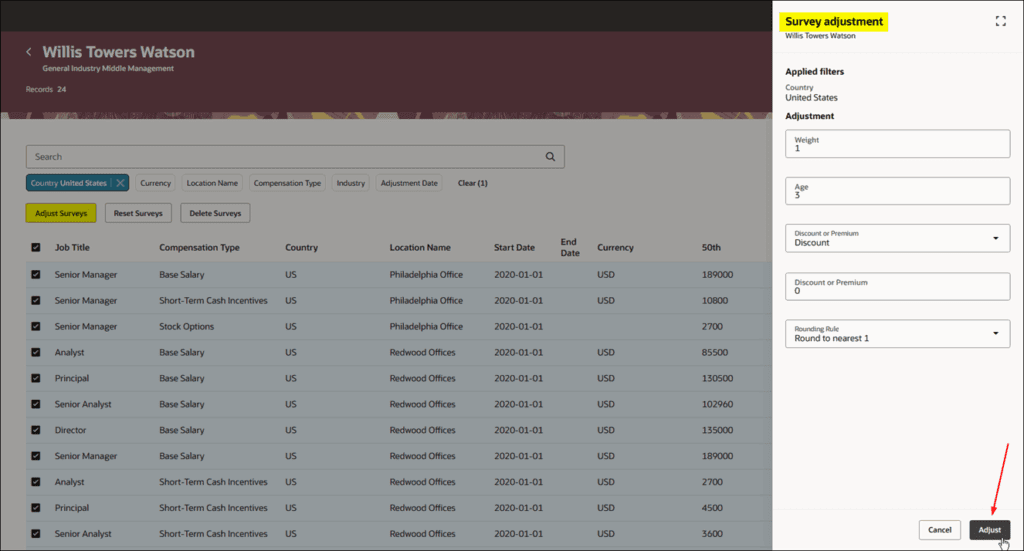
2. Generative AI
The only Gen AI feature introduced in 25C is conditional visibility control of the AI Assist button in the Market Composites section.
- Admins can now define business rules to show/hide the AI Assist button based on role, BU, or other attributes.
- Previously, this was a static toggle and offered no flexibility.
- This empowers organizations to govern AI usage for compliance, piloting, or phased rollout.
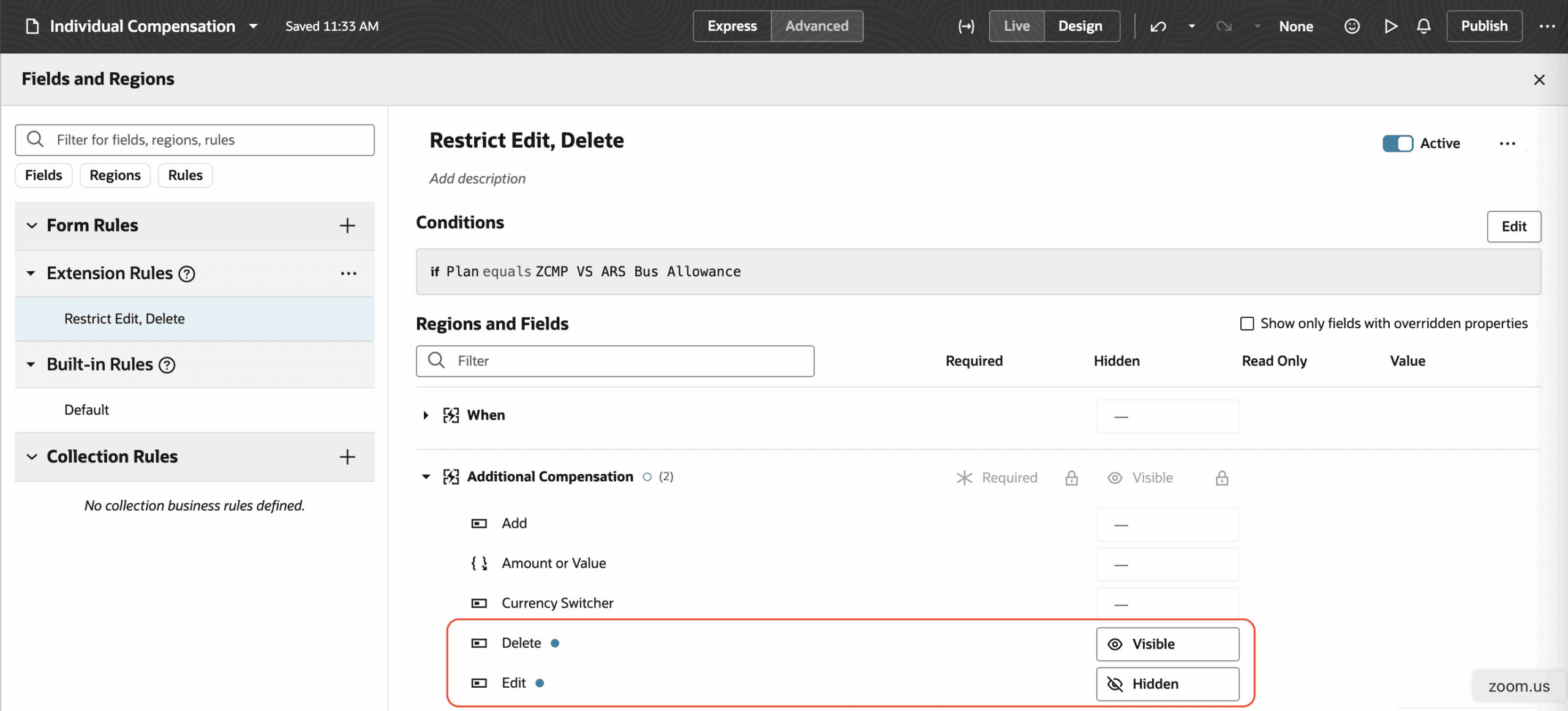
3. Total Compensation Statement: Item Details Display Option at Category Level
Quick Notes:
This feature enhances the flexibility and customization of total compensation statements by allowing administrators to control the visibility of item details at the category level—rather than just the overall statement level. You can now choose whether to display item detail sections in the online and printable versions separately, per category.
Previously, you had to apply the detail visibility setting globally across the entire statement. With this update, you can create cleaner, more targeted compensation statements that emphasize specific areas while de-emphasizing others—particularly useful for simplifying complex statements or hiding sensitive breakdowns when not required.
This is important for companies that want to tailor their communication of compensation more granularly and professionally, especially for high-level executives or regional variations.

4. Show Person and Assignment Details in Page Header
Quick Notes:
This Redwood enhancement improves user clarity and experience by allowing compensation admins and managers to configure up to four person-related attributes in the page header across various compensation-related transactions. Supported fields include:
- Person Number
- Business Title
- Assignment Number
- Job Name
- Position Name
- Position Code
This makes it easier to identify the context of compensation changes at a glance—minimizing misallocation risks, especially in high-volume planning periods or when managing multiple assignments.
It also supports Visual Builder Studio (VBS) configurations, offering developers and admins more layout control and customization in Redwood pages. This enhancement significantly improves data visibility, auditing confidence, and ease of navigation across the following pages:
- Change Salary
- Administer Compensation
- My Compensation
- Personal Contribution
- Individual Compensation
- ViewCompensationHistory
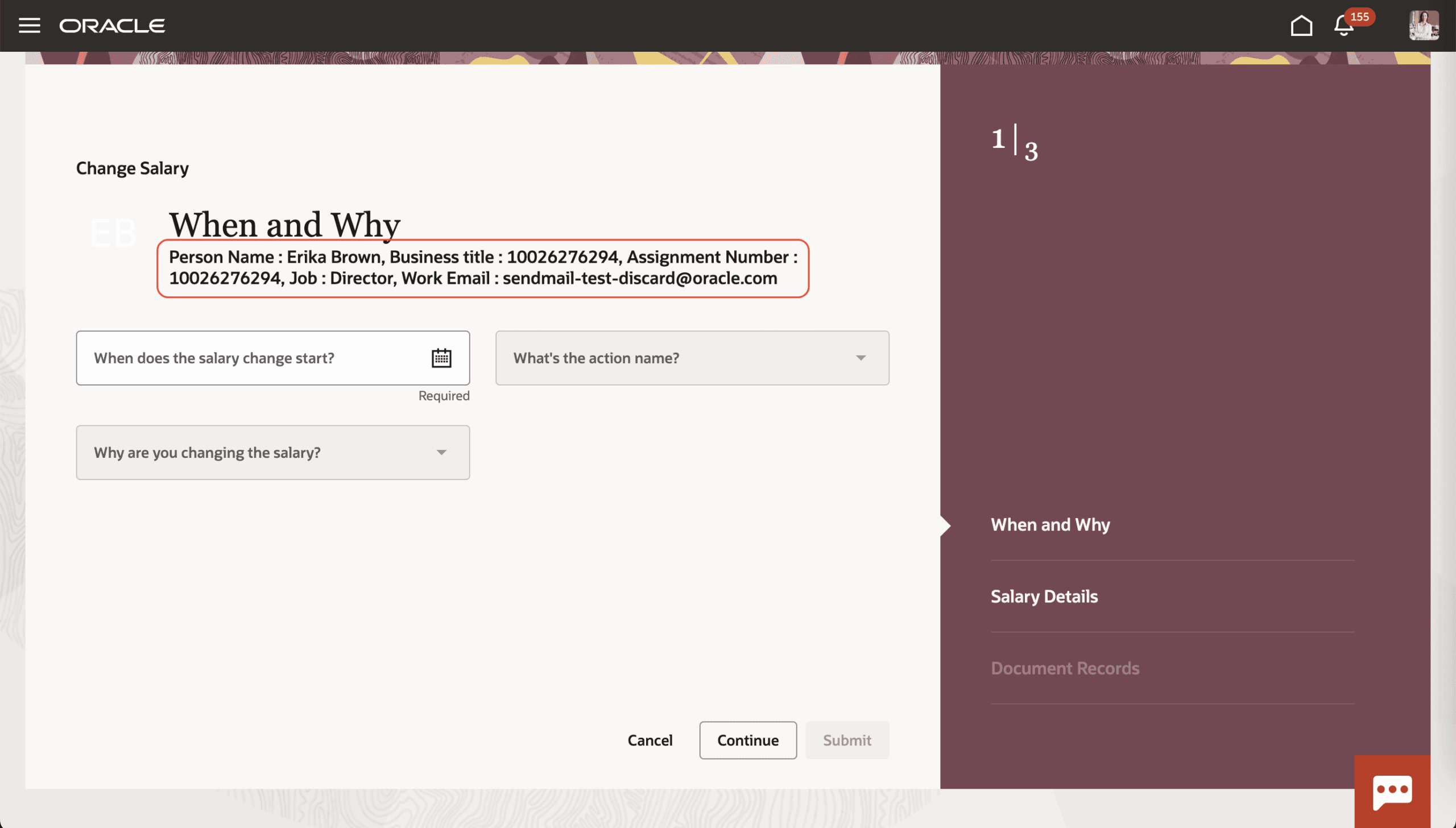

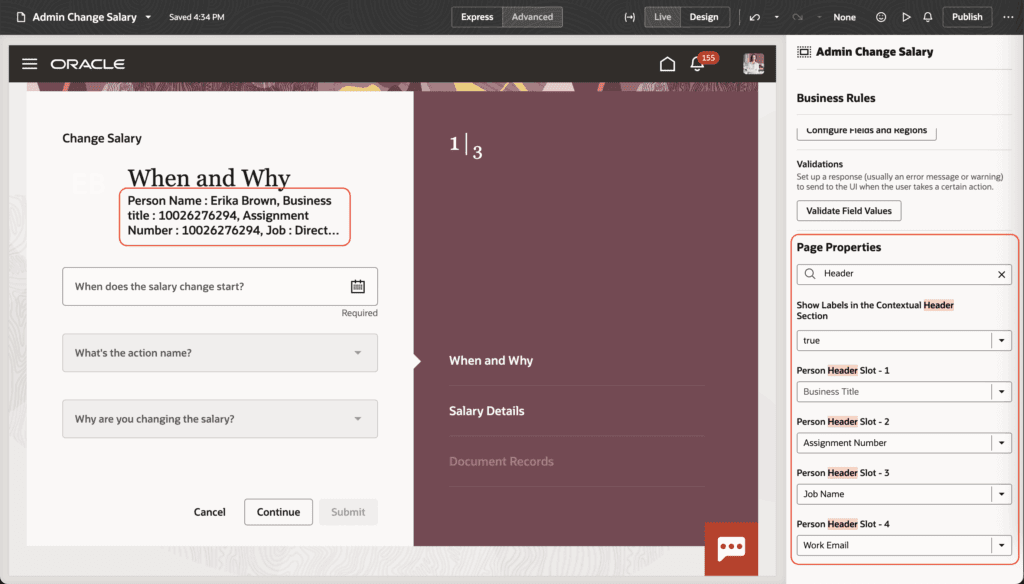
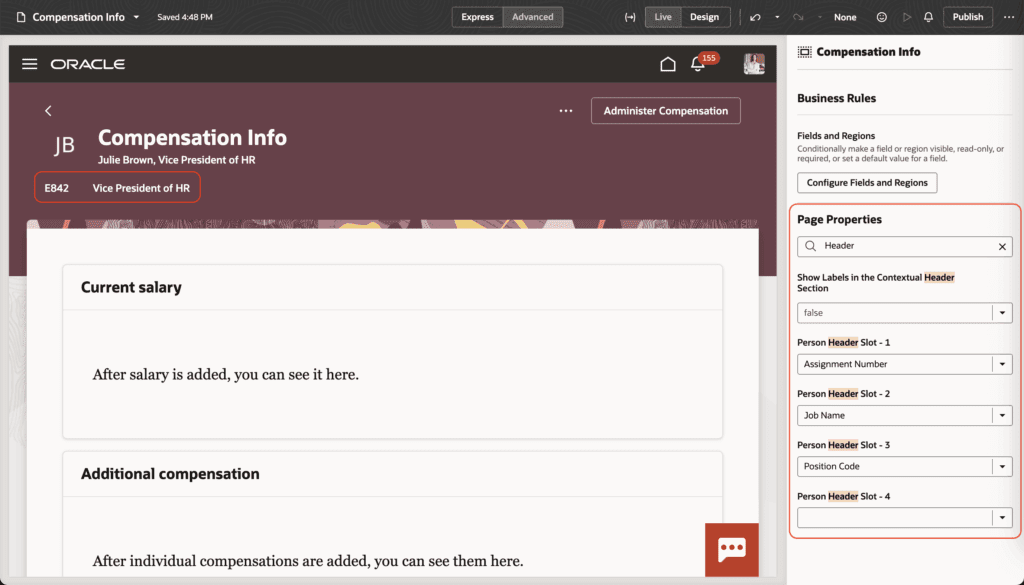
5. Market Data: Business Rule for AI Assist in Compensation Info Market Composites
Quick Notes:
This feature introduces conditional control over the AI Assist button within the Market Composites section of the Compensation Info page using business rules. Previously, the AI Assist functionality could only be globally enabled or disabled through a static setting.
With this update, Oracle enables greater flexibility through Visual Builder Studio, allowing organizations to define dynamic conditions—such as role-based access, effective dates, or business unit criteria—for when the AI Assist button appears.
This empowers compensation administrators to roll out AI guidance strategically, limit usage during sensitive review periods, or tailor access to specific teams, thus improving governance while still leveraging AI for benchmarking and salary insights.
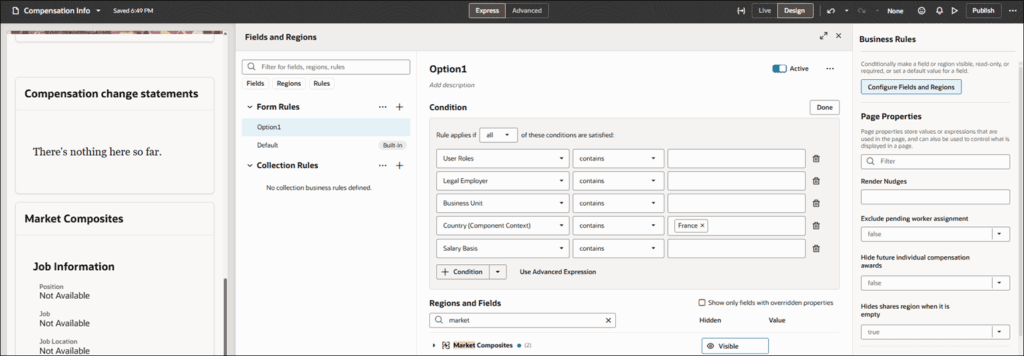
By Megan Wright

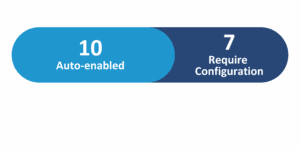
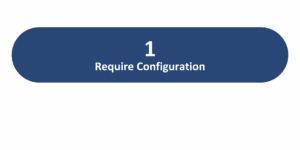
 Customer-Voted Enhancement
Customer-Voted Enhancement

